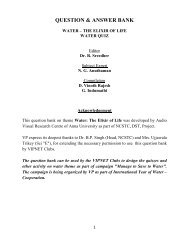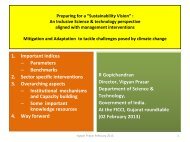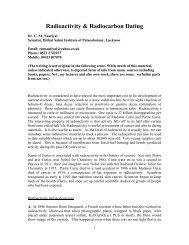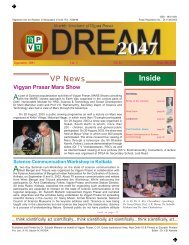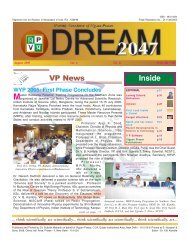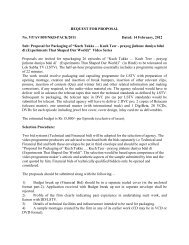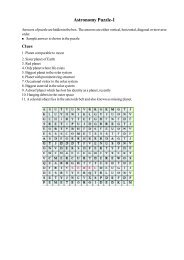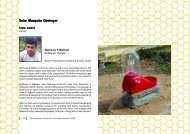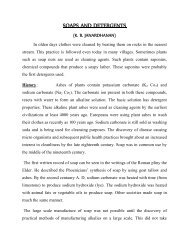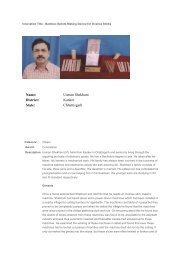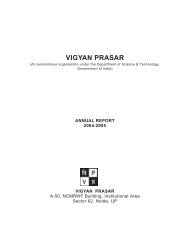Vidyarthi Vigyan Manthan: A national programme to ... - Vigyan Prasar
Vidyarthi Vigyan Manthan: A national programme to ... - Vigyan Prasar
Vidyarthi Vigyan Manthan: A national programme to ... - Vigyan Prasar
Create successful ePaper yourself
Turn your PDF publications into a flip-book with our unique Google optimized e-Paper software.
imported grains <strong>to</strong> feed our population. Firstly, there is never a perennial or dependable<br />
source for importing grains as inter<strong>national</strong> relations keep changing. Secondly, by importing<br />
grains, we could not check the rate of their price rise. In the 1960s though, this situation was<br />
not unique <strong>to</strong> India. A lot of Third World countries had recently got their independence and<br />
they were struggling <strong>to</strong> feed their populations. At this point in time, the introduction of dwarf<br />
high-yielding varieties of wheat, coupled with use of chemical fertilisers and expansion of<br />
irrigation facilities ushered in the Green Revolution, which is supposed <strong>to</strong> have saved the lives<br />
of one-third of the world’s population. The man who is credited with it is Dr Norman Borlaug.<br />
Caption: A typical result of Green Revolution<br />
The introduction high-yielding varieties of wheat in India was the turning point for our<br />
agriculture and we have been moving ahead from there. Several measures were introduced<br />
<strong>to</strong> improve agricultural production along with use of high-yielding crop varieties. In this task,<br />
the group of indigenous scientists led by Dr M S Swaminathan played a major role. Among<br />
the other steps taken include: development of irrigation facilities, more widespread use of<br />
19



